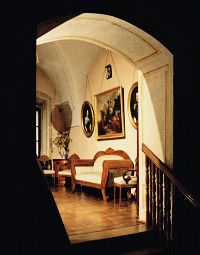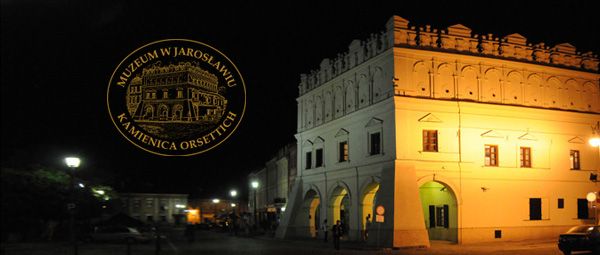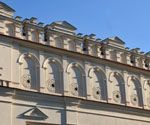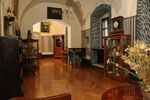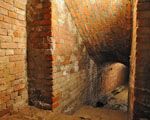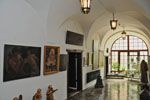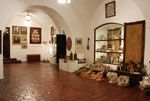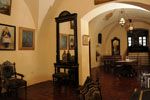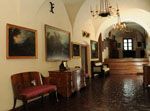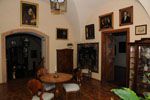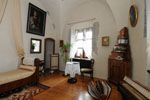|
The Orsetti House, where the Museum is located, dates back to the second half of the 16th century and was originally a part of a high-density housing development. Destroyed by fires, it was rebuilt in the 1630s and its mannerist style and interior arrangement have been preserved to this day. Its design still delights: the facade, the architecture, and most of all the tall, combed roof ornamentations. Most of the rooms in the Orsetti House have vaulted ceilings, except for the Great Chamber, which has a wood beam ceiling. Some fragments of polychrome on the walls (17th and 18th century) and most of the "olstrych" floor (18th century) have survived. Three-story cellars are located deep under this House and under many more of the old townhouses in Jarosław.
The current museum exhibitions are meant to reflect the former character of the House. The upstairs was designed for residential purposes and the ground floor for commerce and formal reception. Historical exhibitions have been arranged in the lower entrance hall (entrance halls were used for travelling between the market square and utility buildings situated at the back of the lot), in the shop-fronts (once used as workshops or merchant offices) and the residential interiors – upstairs.
Portraits of the town owners, as well as local craftwork, swords, executioner's shackles, paintings and sculptures representing the patron saints of the town, portraits of townsmen, the views of the town, and military and museum items related to education can be seen in the lower entrance hall and in the former shop-fronts.
The Great Chamber, situated at the back of the House, is the House's most representative room. Beautiful Italian Renaissance furniture, Gdańsk-style wardrobes, a monumental gothic sculpture of the Madonna with Infant Jesus, 17th-century Italian and Flemish paintings, and artistic craftwork placed in ambries (cabinets that once held religious relics) add to the Chamber's splendour.
The upstairs rooms have beautiful old-world interiors. There is an eclectic parlour, a dining room, a Biedermeier living room set, a "Striped" Rooms, and a maiden's chamber.
In the ground and first floor corridors hang portraits of the owners and co-owners of Jarosław (photo-reproductions on canvas) and, in the second floor corridors, paintings and sculptures of contemporary Jarosławian artists, mainly from the Fine Arts Group in Jarosław, are exhibited.
home

|



